By George Dyke and George Klein…..
For a production model with a mere 5 year life span, (arguably 4 considering that the SM was produced from 1970 to 1975 and that few were made in 1970 and only a handful in 1975), the number of different standard radio configurations that Citroën chose to install in the SM has to be one of the most found any one automobile model. Perhaps the reason for so many variations is that the radio was mounted sideways, between the front seats in the center console. Not the most intuitive place to put a radio and a location where the driver had to look well away from the view of the road to make any adjustments. Reviews at the time were critical of the radio’s placement. It would stand to reason that Citroën were obsessed with improving its operation given that it was not going to be repositioned to the dashboard, at least not by the factory, once the interior design of the SM was finalized.
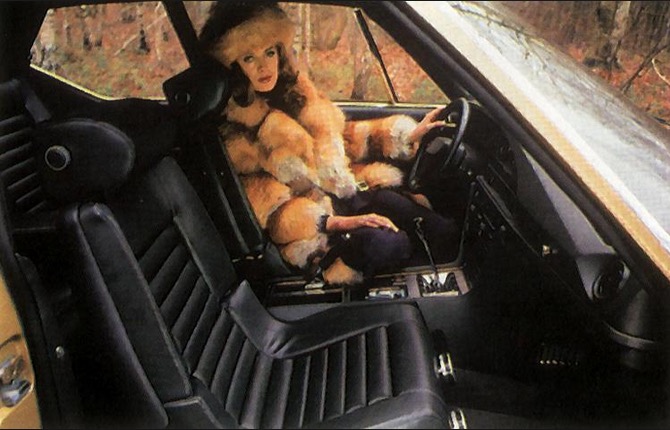

In fact, when the SM was introduced, Citroën listed the radio as an option. A rather odd omission since the SM was a luxury coupé and the competition (Jensen, Jaguar, Mercedes Benz) had radios fitted as standard equipment. Early SMs actually got a chrome “blank” plate instead of an antenna when the car was ordered without the radio (in later years, Citroen appears to have just thrown antennas in all of them).
Before we delve into the SM’s radios, DS models in the 60s (referred
to as having the 2nd series dash) had pretty much any type of radio fitted from plain Motorolas to nicer Blaupunkts. All that was needed for their installation was for the glove box to be removed and one of several radio plates installed on the radio purchased by the client. The radio was installed where there was a dash-plate covering a dedicated slot just right of the ashtray and below the glovebox. In the late 1960s a Blaupunkt
radio with built-in cassette player was offered.
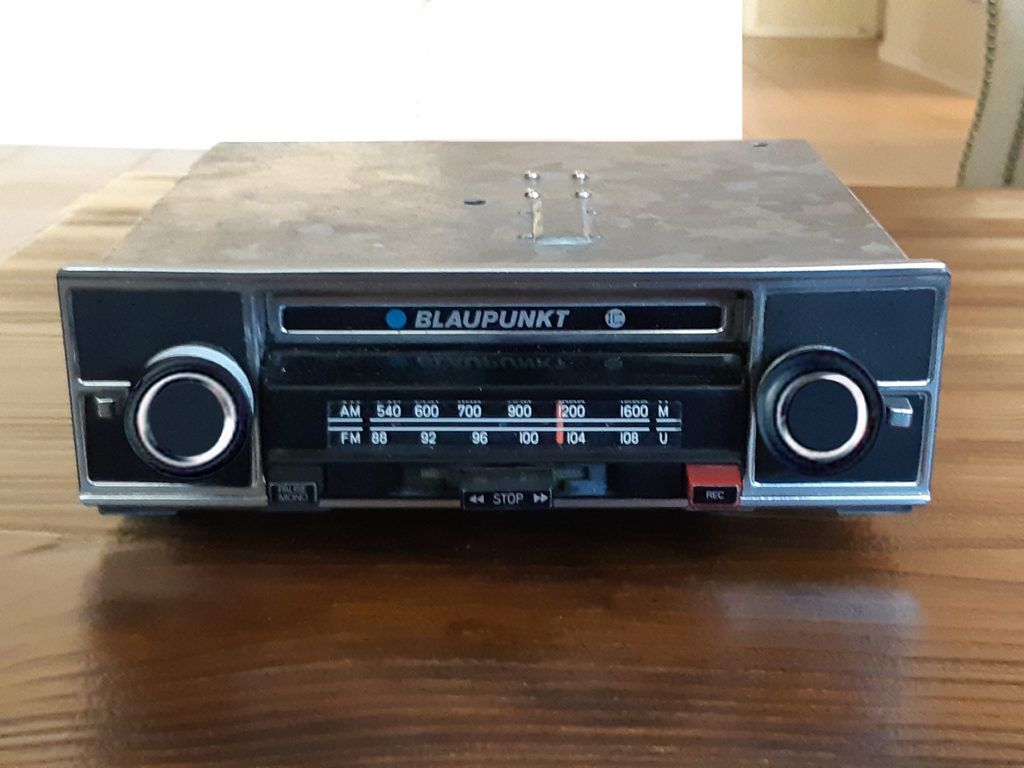
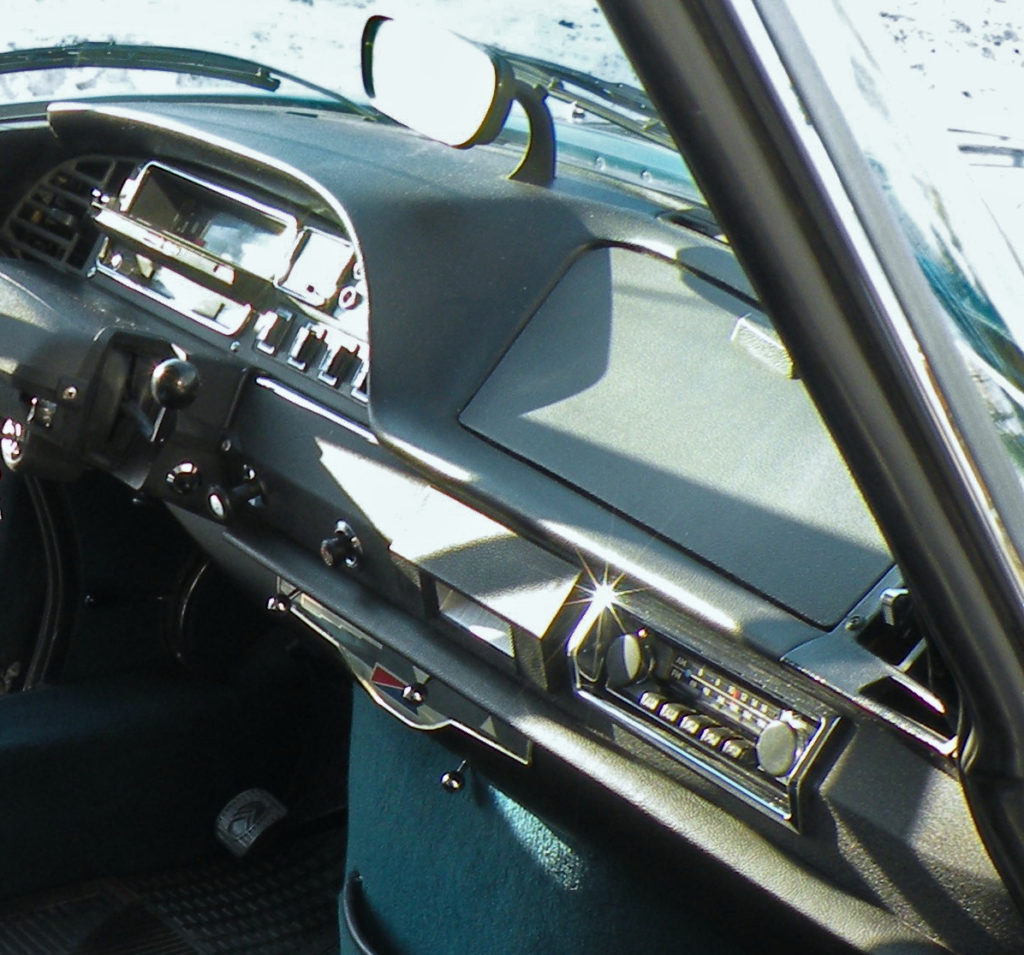
From 1970 onward in the USA (when the 3rd series, 3 round dial display dash came out) if the optional radio was ordered, Clarion AM/FM units were installed by Citroen USA and these had the Citroën name on the clear face-plate. When these were fitted, the dash faceplate was heightened by cutting away part of a dash plate above the ashtray that was pre-cut to accommodate smaller European radios.
When the US Clarion radio was installed it masked that hack. This butchering job, at least at the West Coast Citroën headquarters in Los Angeles, was dutifully carried out under the direction of Albert Bonfond, Technical Manager of Citroën USA on the West Coast by his son, Richard Bonfond, who also worked there under Richard’s uncle, Desi Hensen, who was in charge of new car prep. They, as well as another employee, cut the panels with a hacksaw!
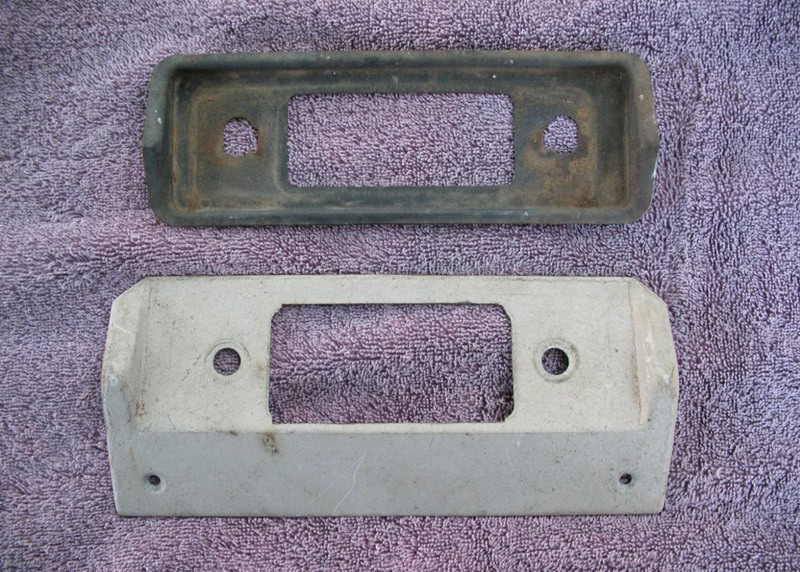
When the vehicles arrived from France they never had a radio in them — just the plastic map pocket which
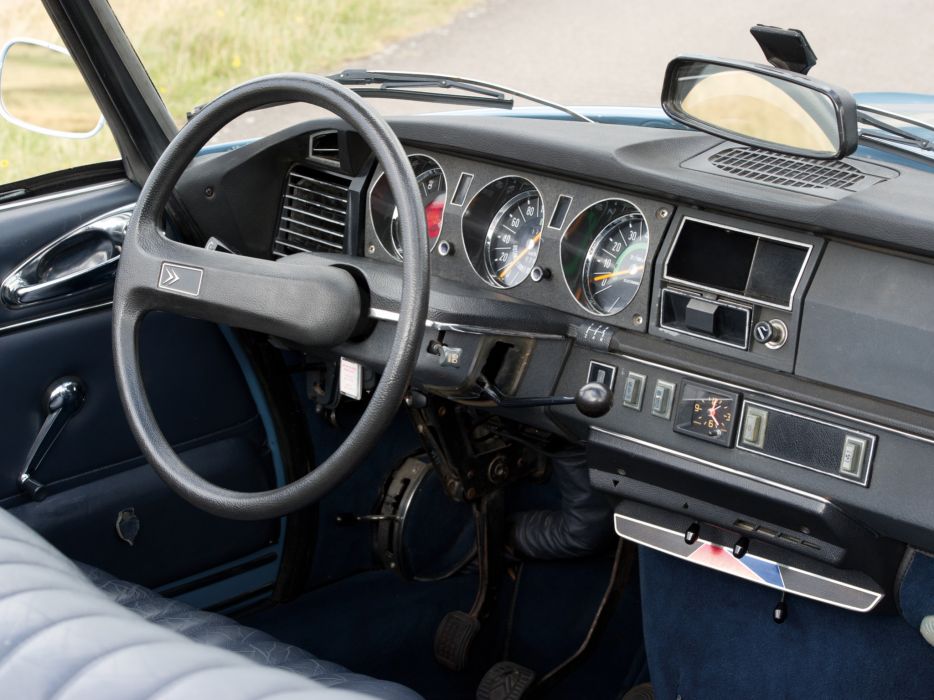
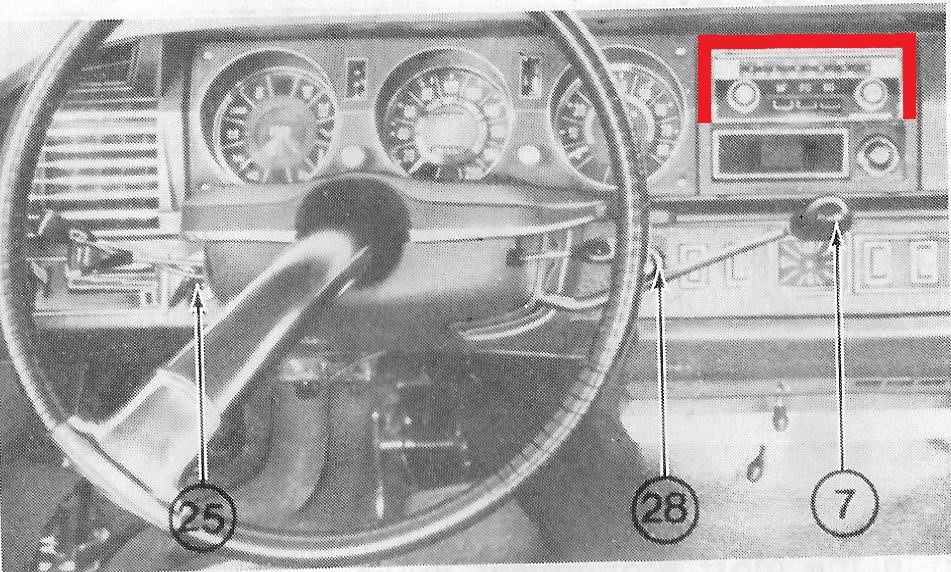
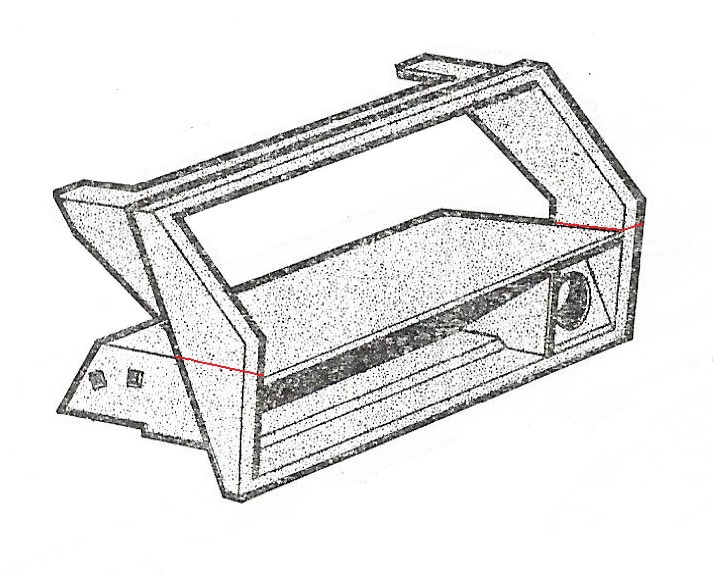
Richard recalls; “I might have seen a couple of overseas delivery cars come through with the small French radios which the customers either kept or replaced with a better radio. Overseas delivery cars had to come through us prior to the client receiving them to remove the Cibié headlights and install sealed beams which is another story!”
In Canada, when DS of the same era were fitted with the optional radio, an Audiovox radio, made in Japan was installed. The AM model was the C-420 and the AM/FM model was the C-525A.
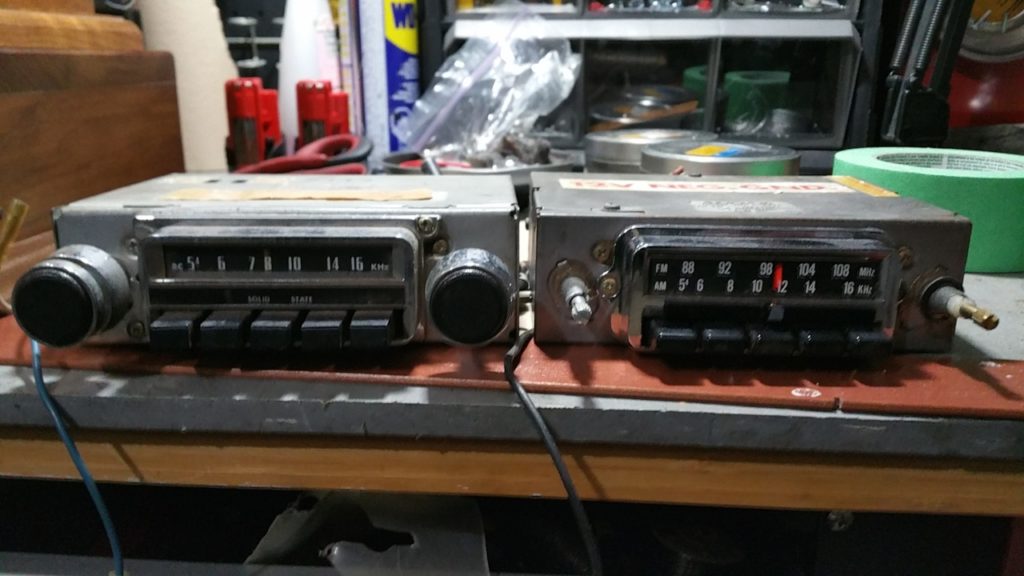
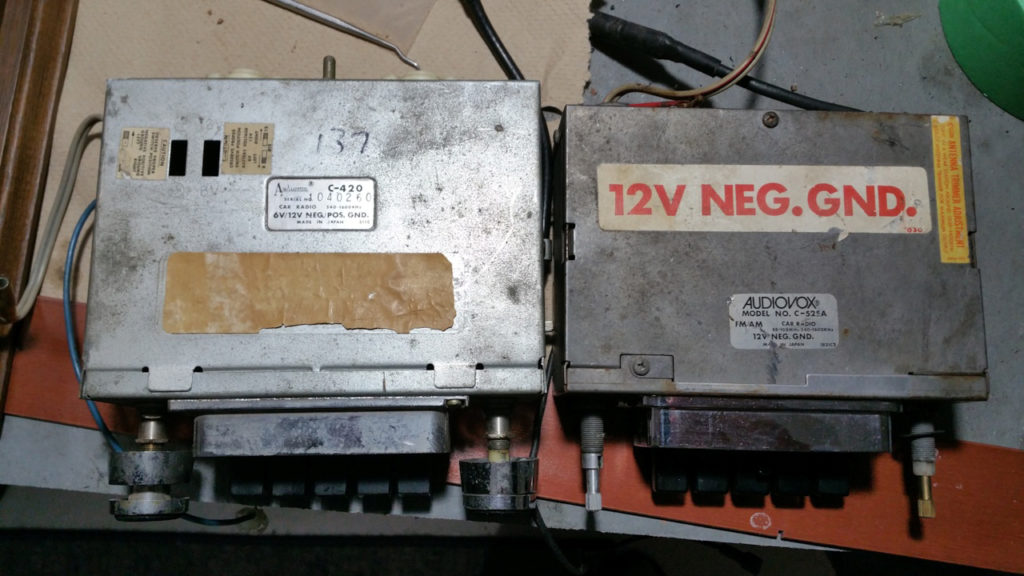
Now, let’s move on to the SM…
Sound acoustics were never the SM’s strong point. It had three speakers for the radio; one in the left front hidden under the dashboard and two in the rear seat side panels. It was envisioned at the outset that a mono sound would permeate the cabin and that sound balance would be adjustable between front and rear. Later on, and for the US market primarily, stereo sound was incorporated as the SM was marketed as a luxury coupe and comparably priced cars were equipped with stereo radios.
The center console in the SM is very shallow, and that necessitated with some radio offerings, a two-piece set up where the amplifier was located under the glove compartment in a covered panel just in front of the passenger’s knees. Two sets of thick cables ran from there to the center console where the tuner was.
Packaging and variations aside, it is the operational control panels of the radios fitted in the SM where the variations are evident at a glance:
- Continental Edison

The original radio was developed by the French manufacturer Continental Edison and bears the name “R437”. It is a vertical design with black bezel and metallic buttons. There are 3 bands; SW (used for FM reception, 87.5 – 108 MHz), SW (for AM, 520 – 1610 kHz) and LW (for frequencies below the lower end of the AM broadcasting band than 520 kHz). Technically, it is a conventional mono radio with FM support. The operation is identical to that of other radios: With the vertical wheel you can adjust the volume, with the large metal buttons, the radio station display can be searched on the scale and there is balance adjustment. The stations can be stored via the buttons, which are pulled out for this purpose and pushed back into the device at the correct station. Although the stations can be automatically tuned, manual selection is preferred because the radio usually fails to hold the station when the car is in motion. The Continental Edison R437 was the first radio offered in the SM and was primarily in the cars delivered in France. Accordingly, it is rare and difficult today to get it, as now collectors from around the world have become aware of the radio and are looking for it. It is arguably aesthetically the most appealing and at the same time most original radio for a ‘French spec’ SM.

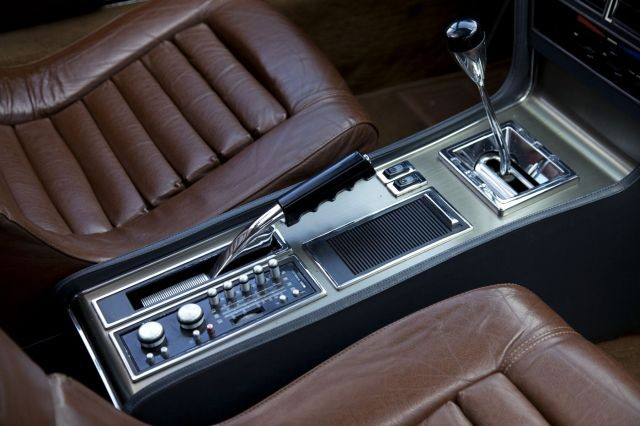
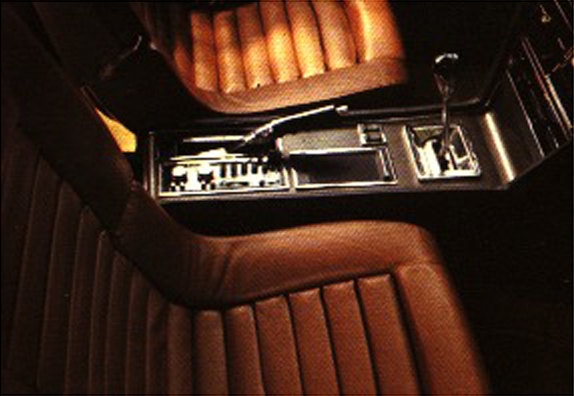
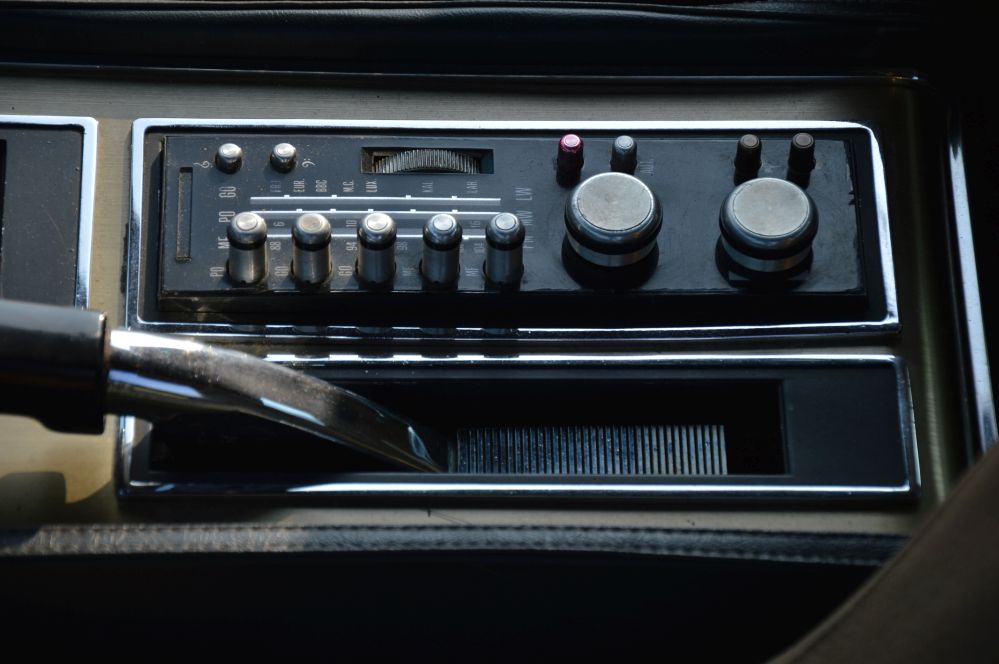

2. Autovox

In Italy, delivered SMs had their own, special vertical station display radio, made by the Italian manufacturer Autovox. Also, a conventional mono radio with FM support, it had 3 bands but different from the Continental Edison radio; FM (87.5 – 108 MHz), M1 (AM from 520 – 920 kHz) and M2 (AM from 900 – 1610 kHz). Like the Continental Edison R43, this radio has an external amplifier part which must be installed outside the center console.
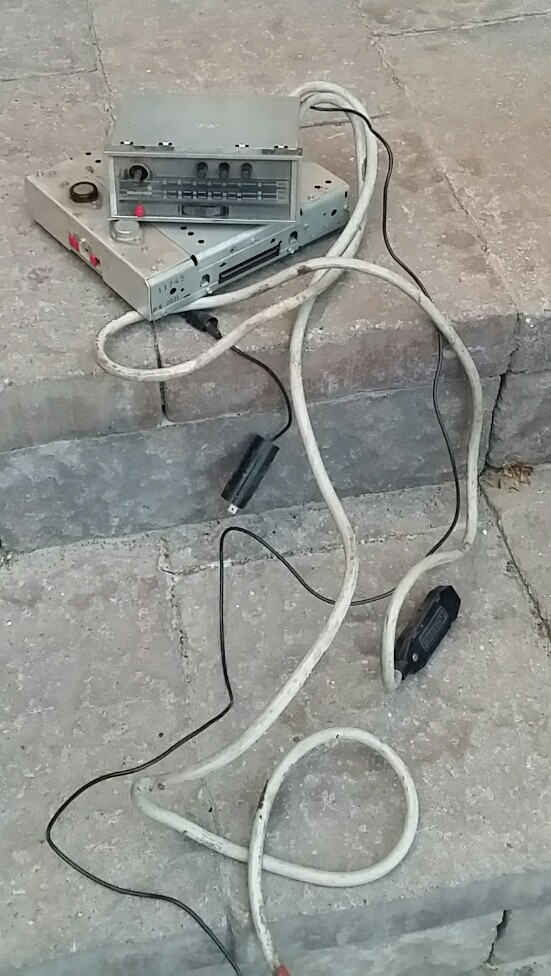
(After repairing two Autovox radios, we have found that many of the parts such as capacitors and resistors are of Russian origin and that the electronics can be repaired by a technician who is familiar with these things.)
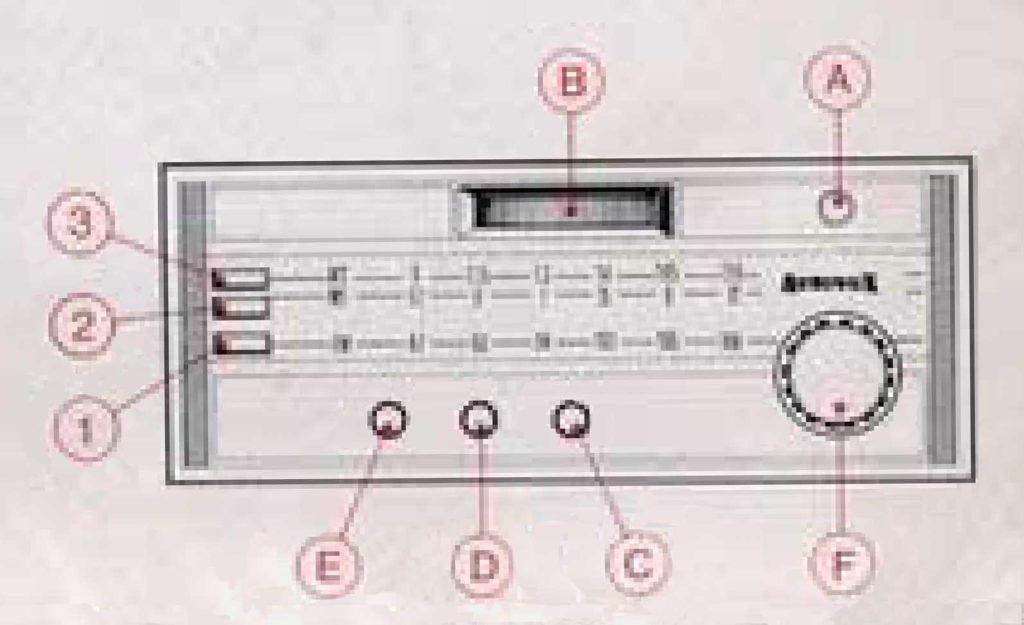
A) On / Off button.
B) Knob for adjusting volume.
C) Push-button for tone adjustment: when extracted, it enhances the high notes (treble, when pressed, it enhances the low notes (bass)
D) Push-button with three positions for the waveband switching: the three positions are obtained when pressing the push-button and are indicated by the ON switching of one of the three warning lamps existing on the dial:
- Luminous warning lamp (red, FM) for Frequency Modulation from 87.5 to 108 MHz).
- Luminous warning lamp (green, M1) for the first Medium waveband (from 520 to 900 MHz).
- Luminous warning lamp (green, M2) for the second Medium waveband (from 900 to 1610 MHz).
E) Push-button with two positions: switches the automatic stop sensitivity of the tuning:
- When pressed, it reduces the tuning sensitivity and is, therefore, suitable for tuning the local stations, having a strong signal;
- When extracted, is in the position of the maximum of sensitivity and is, therefore, in the position suitable for tuning more distant stations having a weakened signal.
F) Tuning knob with a double function; when extracted and turned, it controls the manual tuning; when pressed, it starts the automatic tuning of the stations (when pressing the knob, the automatic tuner runs toward the next station).
The tuner unit is provided with a socket for connecting the
Further back from the radio console of the Autovox was another panel that housed the power antenna switch and another knob that was similar to the tuning knob. It was the fader knob to adjust sound balance between the one speaker in the front and the two speakers in the rear.
3. Blaupunkt

In Germany, delivered SMs had mostly factory installed Blaupunkt radios either the Frankfurt or Coburg type models. Blaupunkt Coburg models have an automatic station search button. However, neither were adapted to the vertical design in the

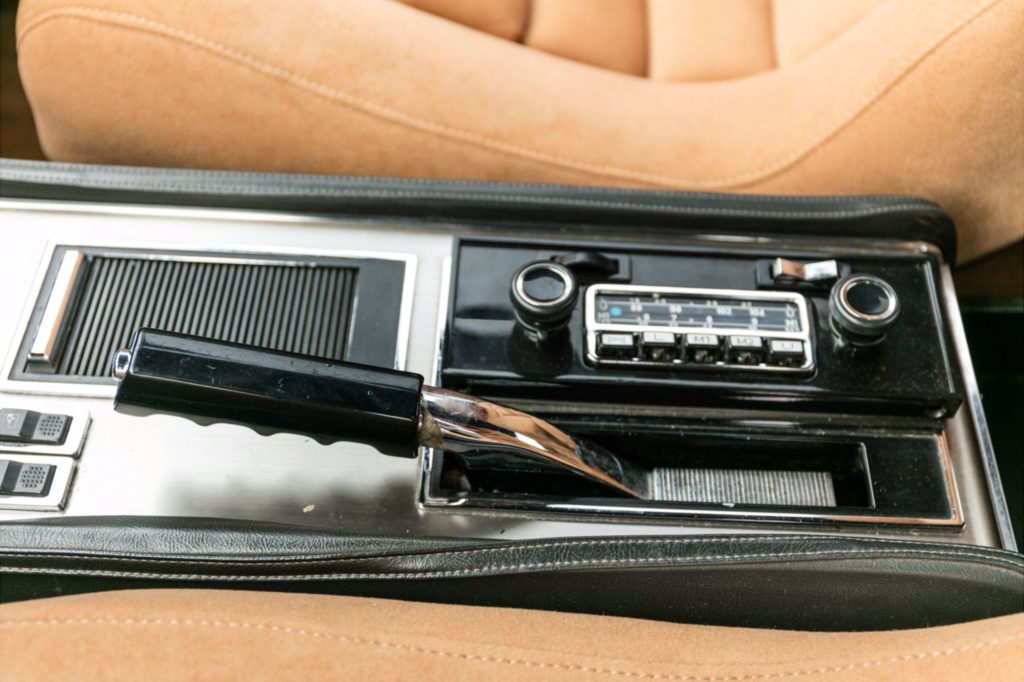
4. Motorola – USA radios
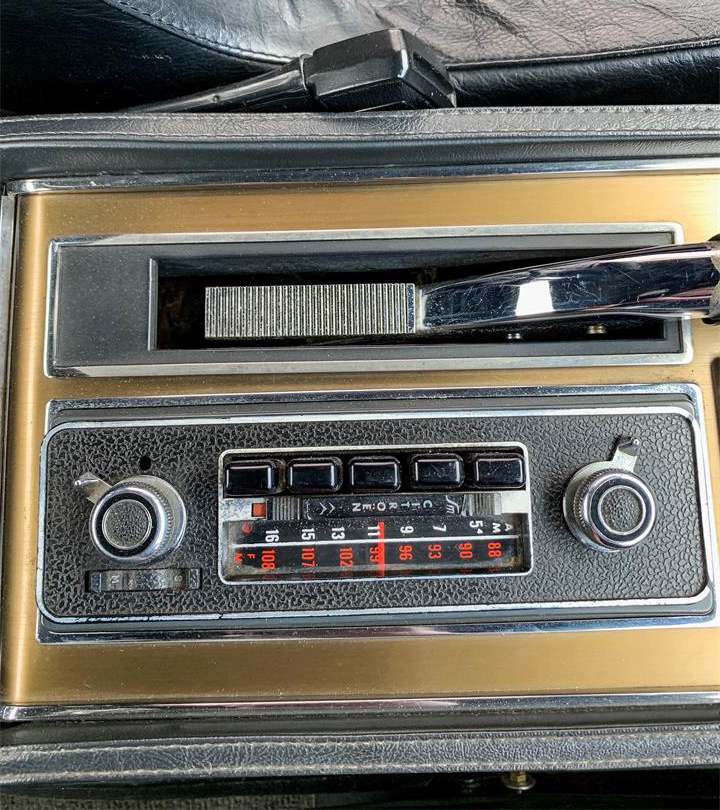
Even though Citroën’s initial USA press release for the SM and the first brochures they handed out stated that a stereo radio was optional (along with air-conditioning and tinted glass) in reality, all SM’s but the early test cars came outfitted with all three. By the time Citroen USA introduced the automatic version (that would eventually appear in 1973) brochures for the SM going as far back as October 1971 stated that a stereo radio was standard. Consequently, Citroën USA decided at the outset to fit a US sourced radio in the SM and chose an AM/FM stereo unit by Motorola. Jerry Hathaway at SM World confirms that they were sourced from Chip’s Radio, on Overland Ave in Culver City, CA who also manufactured the adapter plate to fit the Motorola radio into the SM’s center console.
If you look closely at the Car & Driver’s first road test of the SM, and the Playboy article on the SM, both reviews were done with the early SMs that were brought into North America, and both show no radio! Yet in the Motor Trend ‘SM car of the Year” test, which was a little later, the Motorola radio is installed. Most likely just after Car and Driver and Playboy, Citroën in Los Angeles drove an SM over to Chip’s Radio so they could figure out how best to mount a Motorola radio and thus began their contract to supply them for Citroën’s US market.

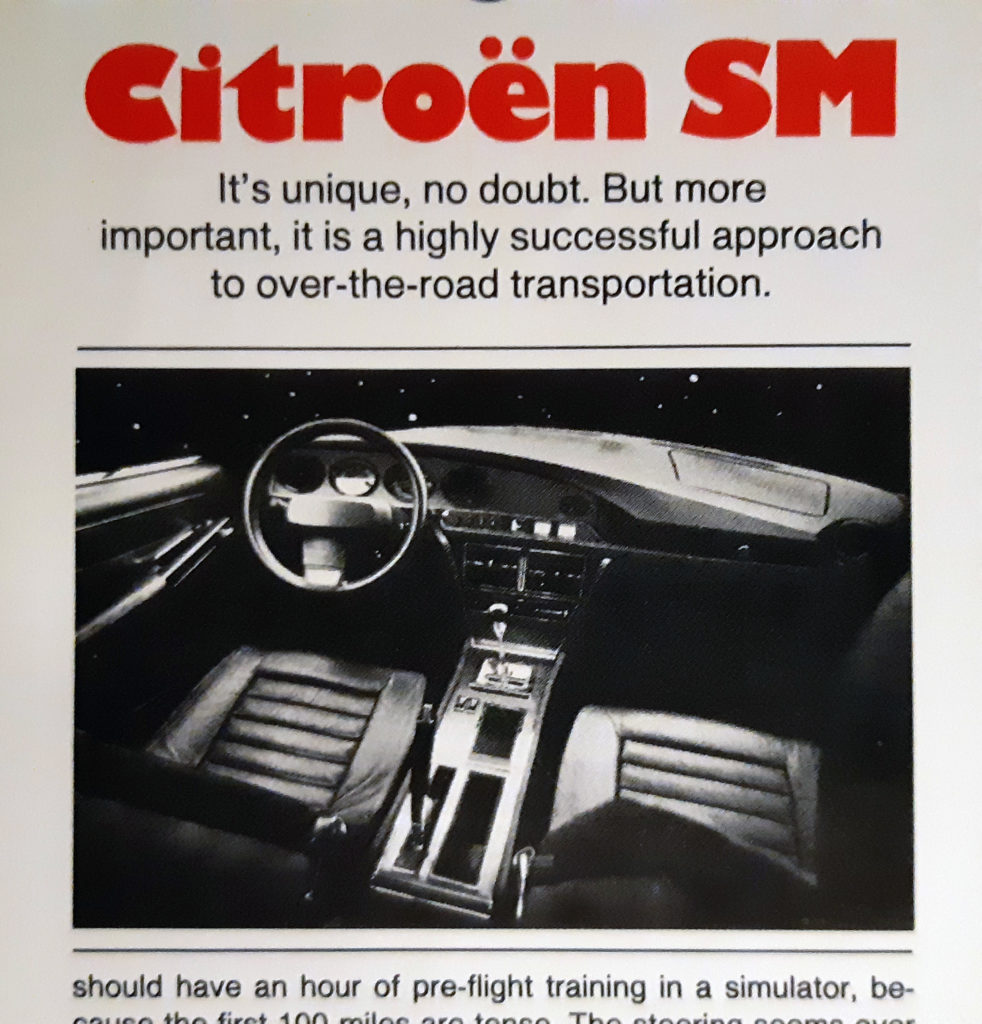

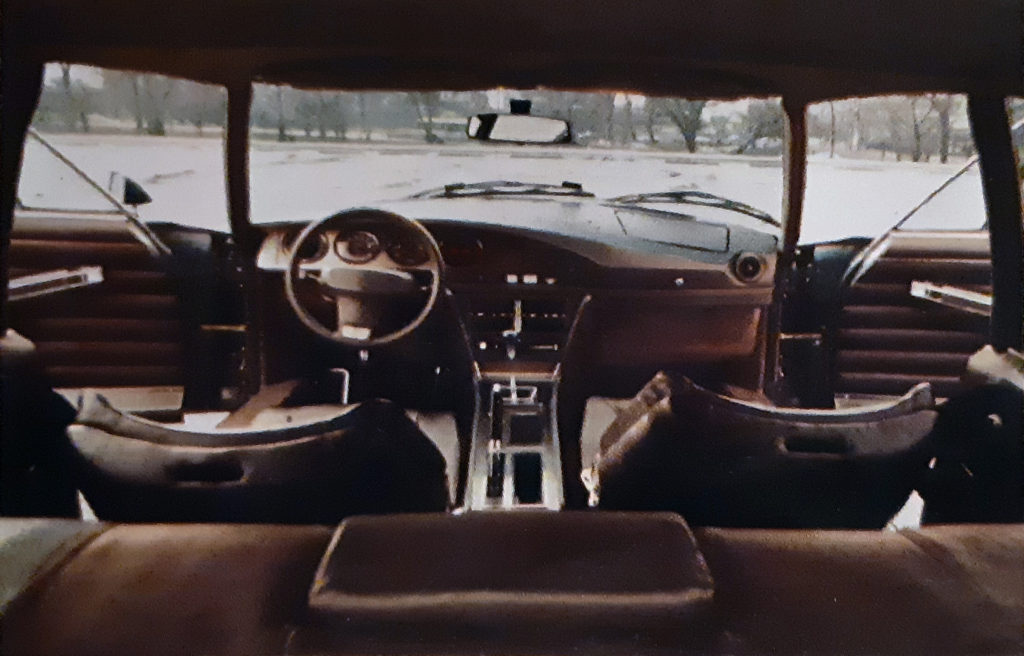


All Motorola radios were fitted into SM’s after they were imported into the USA.
The US Motorola stereo radio had 5 manual station pre-select buttons. There was no automatic station search and it had a

Three types of these Motorola radios were fitted in the SM. All had the same radio electronics but Initial radios had no built-in power antenna switch.
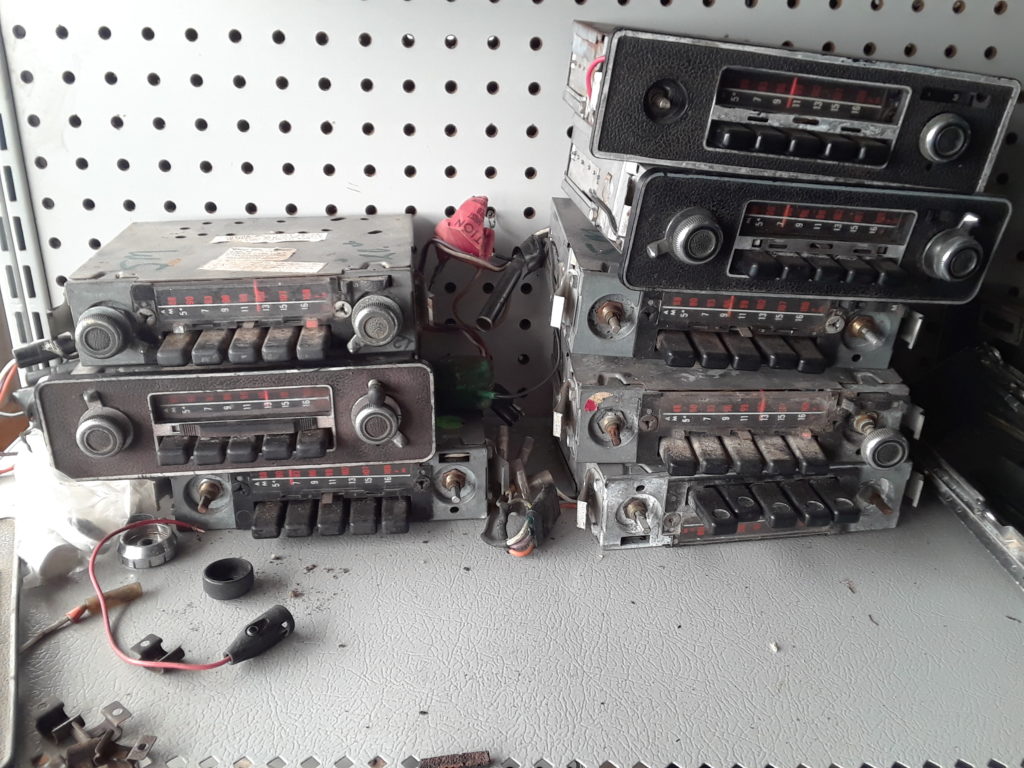

By 1972, that knob was replaced by a rocker switch, in the same position, that was an AM/FM band selector. And at about this time, in 1972, white markings showing the SM logo, the word Citroën, and dual chevrons were added to the AM/FM selector that became a slide switch.
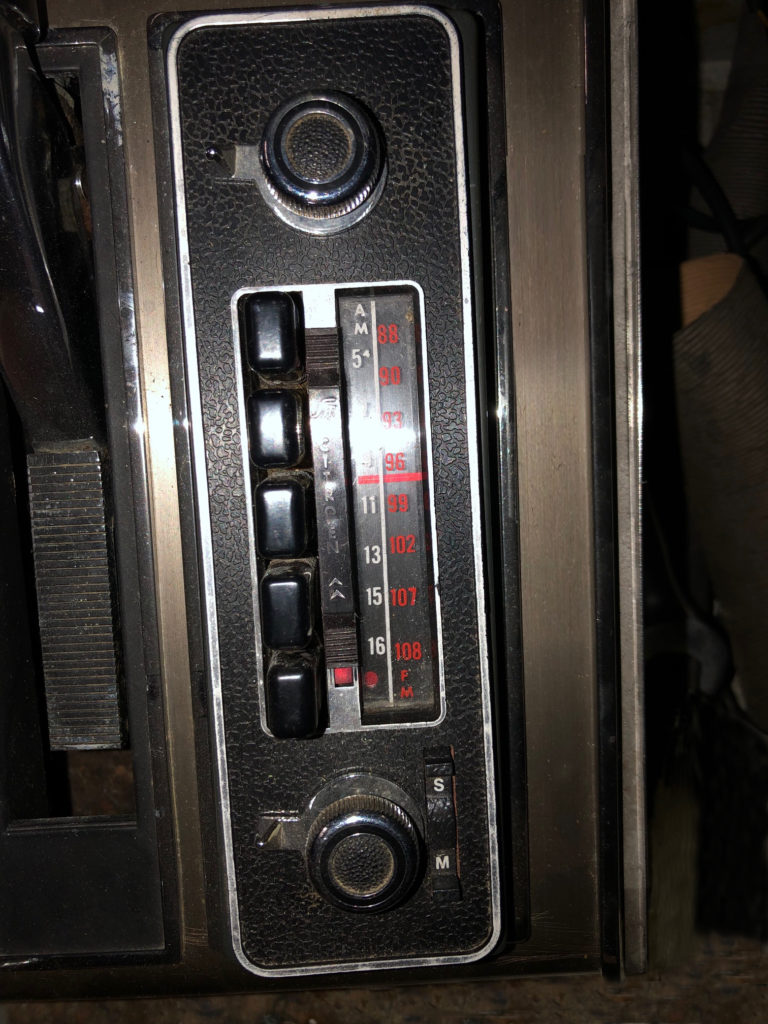
After some US customers, and the US press, complained about the radio’s position in the center console, Citroën USA offered a box for the radio that allowed it
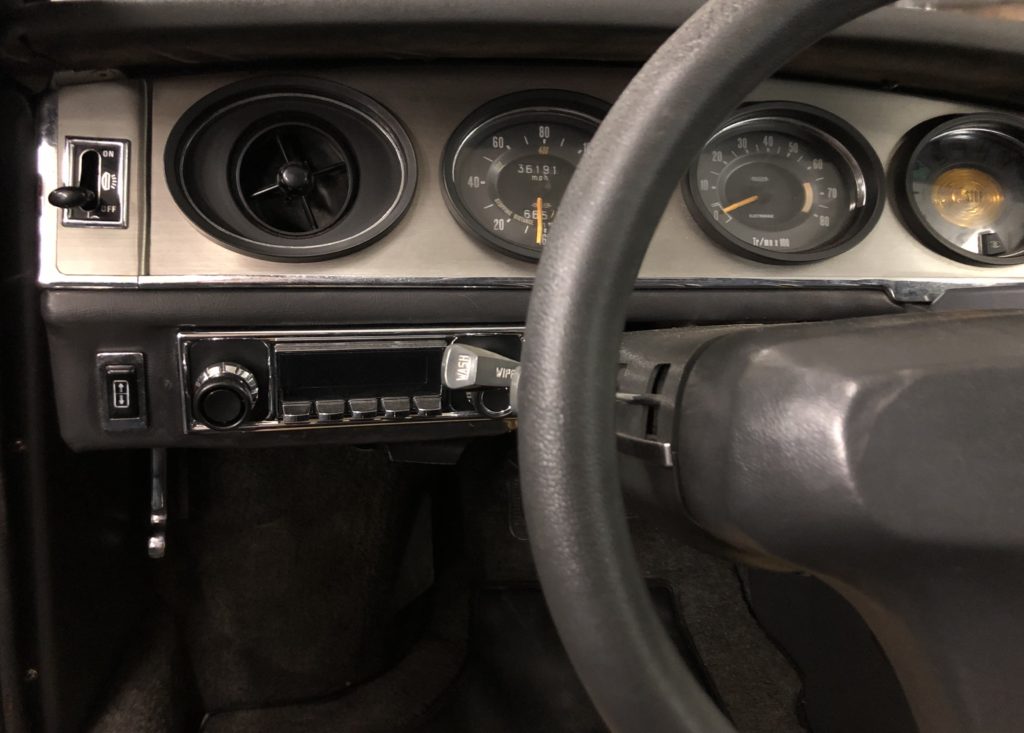
5. Canadian Radios
The initial ‘demo’ SM’s that came into Canada had the Continental Edison radio but that was quickly changed to the Autovox. The Autovox was fitted into most of the 1971 and all of the 1972 models. When the 1973 SM’s were offered for sale in Canada, they were the same configuration as the USA models and some came with the latest iteration of the Motorola radio. (They also had the exposed sealed beam headlights as opposed to the European 6 headlight system that was fitted to Canadian cars in 1971 and 1972).
Many SM radios were changed out by owners.
Reliability, reception issues and the desire for features such as; stereo (in non-Motorola models), cassette, CD, iPod and USB connectivity have resulted in a number of SM owners forgoing originality and fitting modern audio systems. In some cases, they have had to live with a protruding device, and in other instances achieved a more integrated solution by finding a radio (or at least a control panel) small enough to fit into the center console without an annoying protrusion.
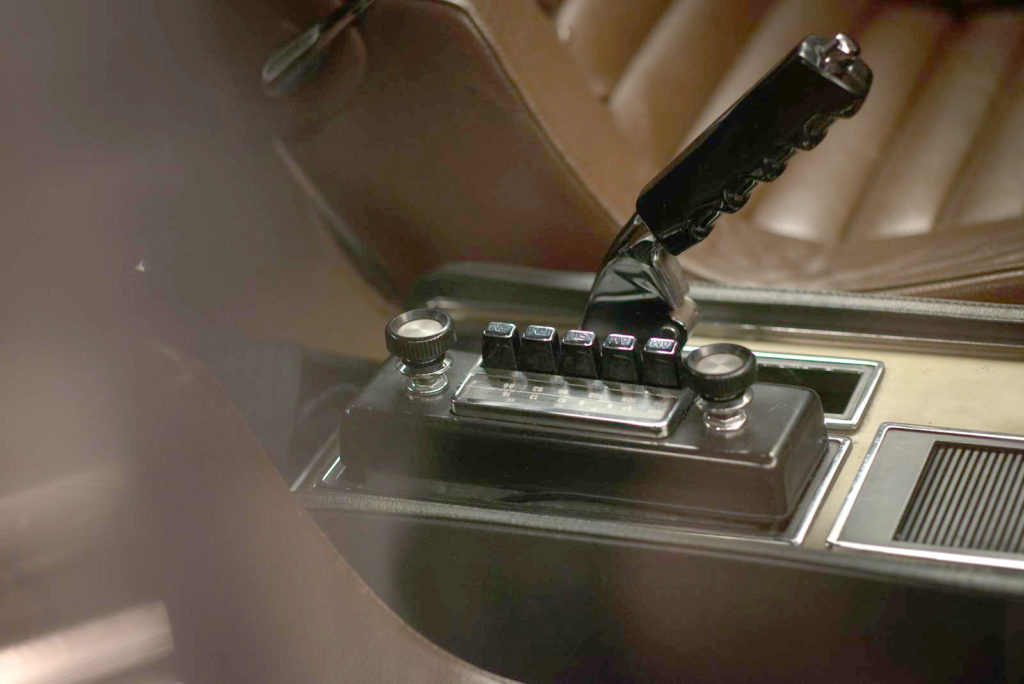

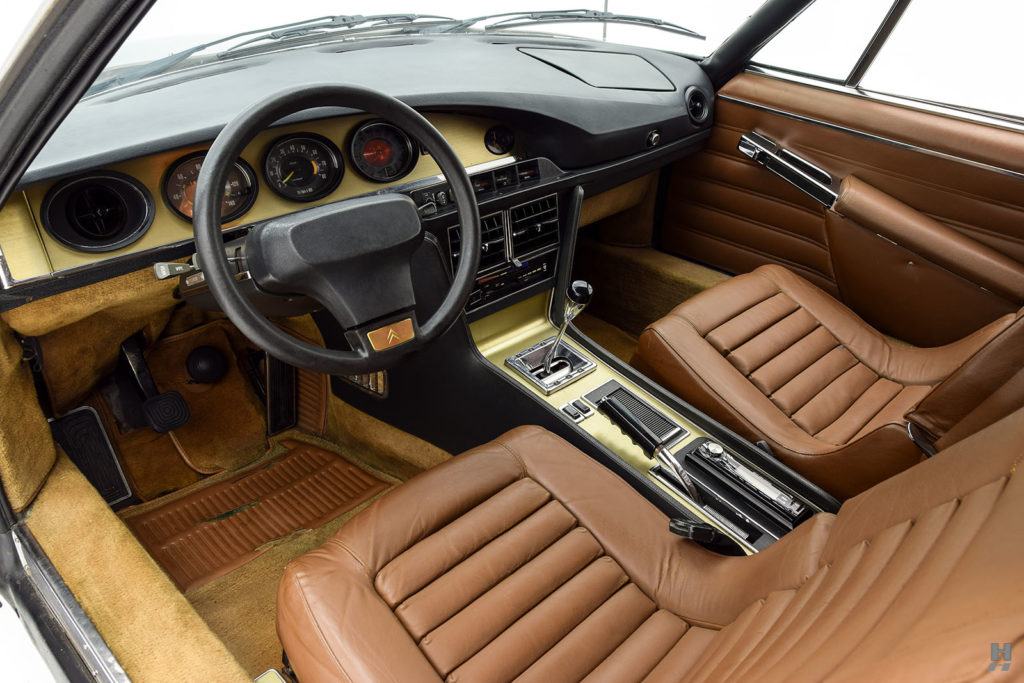
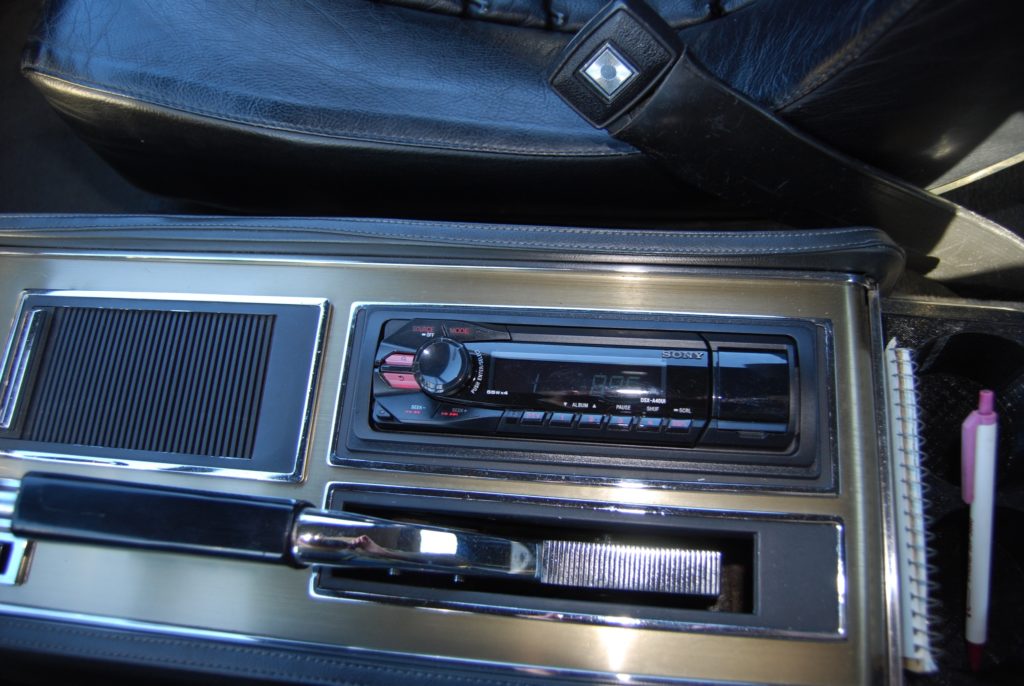
Or, owners figured out a homemade means to mount a radio just below the dashboard…
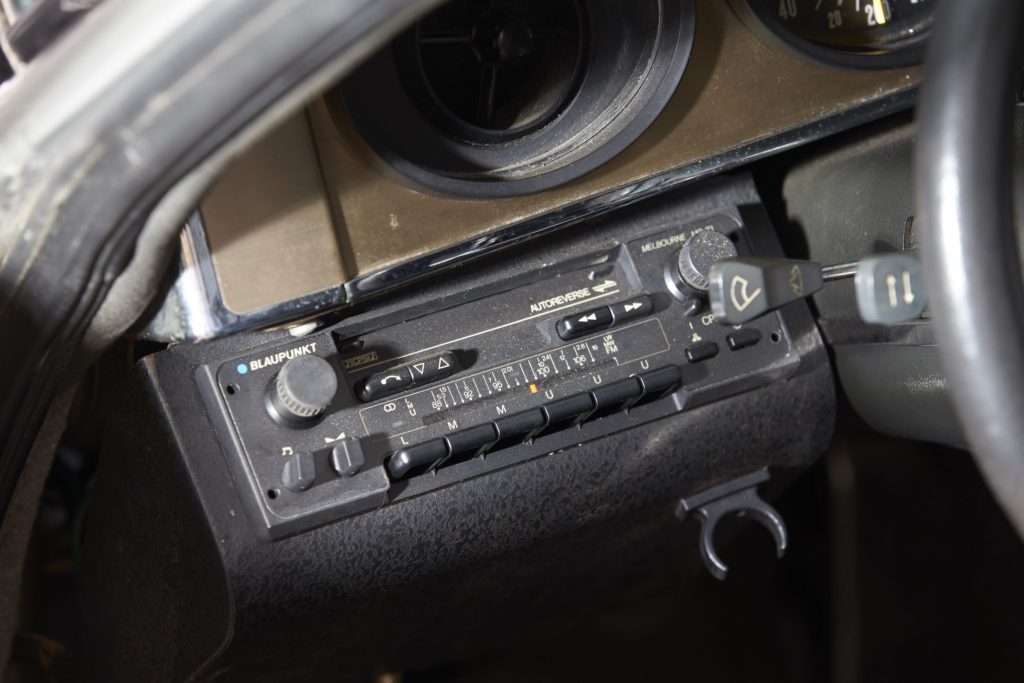
No matter what radio is in an SM now, if you are working in the center console area, invest in some tie wraps and secure all the multi-pin connectors in there so that they do not inadvertently separate as they originally came just pushed together.
Thanks go to: Richard Bonfond in NV, Dave Burnham of Dave Burnham Citroën Repairs and Restorations in NY, David Hume of Excelsior Motors in KY and Jerry Hathaway of SM World in CA for their assistance with this article.


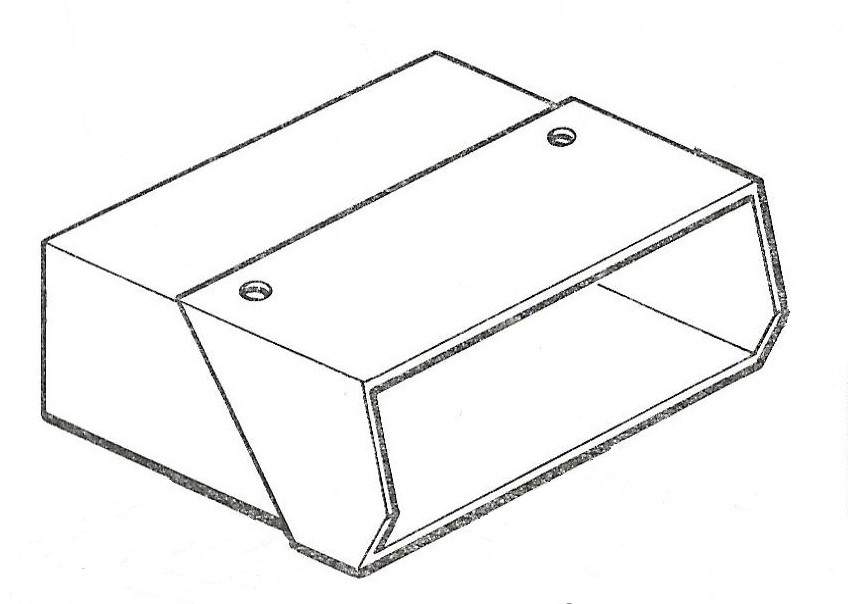

This article on radios that had come in these vehicles, is too long, I used to get many radios of this caliber , because the customers would rather have the most modern Blaupunkt radio cassette.
There was a book on the various radios used in Citroën’s , gosh I have never read so much elaboration in all the 40 years of my career in Audio Video Television and Electronics as this write up!!
The article was written for Citroen enthusiasts and restorers who care about the details before they are lost in history. If the article was too long for Mr Raja, he could have stopped reading it at anytime and gone on with his life.
Thank you for this helpful and informative article.
Don’t know what Mr Raja’s problem is/was.
I enjoyed reading about all of these radios, and learned that the unit in my car is a Motorola, which I didn’t know before. Thanks!
You forgot to mention the Panasonic RM (roof mounted) radios 310, 610 and 710.
If interested in the Continental edison or Autovox or Motorala radios: I heve all these models for sale.
I don’t think that roof mounted radios of any sort were fitted into the SM at the factory.